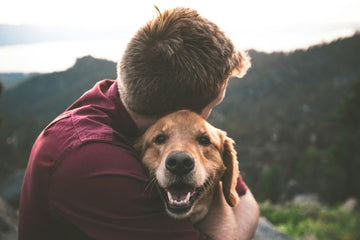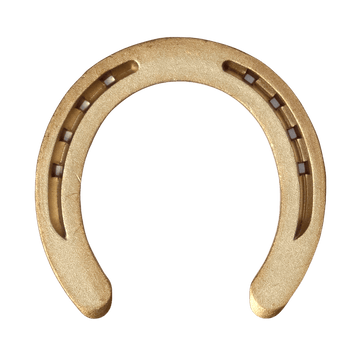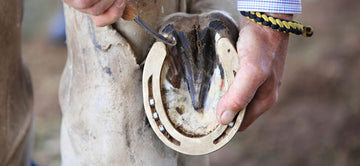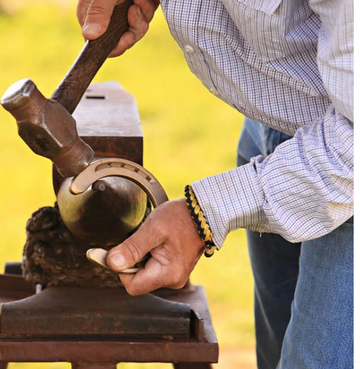I. Introduction to Dog Care for the Responsible Pet Parent
Owning a dog is a lifelong commitment that requires more than just providing food and shelter. As a dog parent, you are responsible for your pet's love, care, training, and companionship.
Understanding your dog’s needs will help them live a long, happy, and healthy life.
To ensure your dog’s well-being, create a care checklist that includes:
-
Proper nutrition and hydration
-
Regular exercise and playtime
-
Veterinary checkups and preventive care
-
Grooming and hygiene maintenance
-
Safety precautions and training
Since dogs don’t come with an instruction manual, it’s up to you to educate yourself and develop a care routine tailored to your pet’s specific needs.
II. Nutrition and Hydration: Food and Water Dishes
Providing a Balanced Diet
A well-balanced diet, tailored to your dog's age, is the foundation of good health and longevity for your dog. Feeding high-quality food formulated for their age, breed, and size ensures they get the right nutrients.
Key nutrition guidelines for dogs include:
-
Feed premium-quality dry dog food designed to support muscle growth, digestion, and energy levels.
-
Incorporate variety by mixing dry food with water, broth, or canned food for additional nutrients.
-
Limit table scraps to prevent digestive upset and vitamin/mineral imbalances.
Fresh Water Access
Dogs should have constant access to clean, fresh water to stay hydrated. Wash their food and water bowls daily to prevent bacteria buildup.
III. Exercise and Playtime
Why Exercise is Crucial for Dogs
Regular exercise is essential for maintaining a healthy weight, preventing boredom, and promoting good behavior. Lack of exercise can lead to obesity, anxiety, and destructive tendencies.
Exercise needs vary based on a dog's breed, age, and health, but general guidelines include:
-
Small breeds: Short walks and interactive play for 30 minutes per day.
-
Medium breeds: 45 minutes to an hour of exercise, including walks and agility activities.
-
Large breeds: One to two hours of exercise per day, including runs and hikes.
Interactive Play and Mental Stimulation
Engage your dog’s instincts and intelligence with:
-
Fetch, tug-of-war, or puzzle toys
-
Obstacle courses or agility training
-
Dog sports such as dock diving or flyball
-
Dog training sessions that promote obedience and socialization
Supervised play ensures they get adequate mental stimulation while staying safe.
IV. Grooming and Hygiene
Brushing and Coat Maintenance
Regular brushing reduces shedding, removes dirt, and prevents mats and tangles. Grooming frequency depends on coat type:
-
Short-haired breeds: Weekly brushing
-
Long-haired breeds: Daily brushing to avoid knots
-
Curly-coated breeds: Professional grooming every few weeks
Bathing Routine
Most dogs only need a bath every few months, unless they get dirty. Overbathing can strip the coat of essential oils, leading to dry skin and irritation. Using a natural healing pet shampoo can also help with keeping your pup feeling and looking their best.
Flea and Tick Prevention
Check for fleas and ticks daily in warm months, especially if your dog spends time outdoors. Use vet-approved flea and tick preventatives to protect your dog from infestations.
Dental Care
Dog's health is significantly impacted by dental disease, which is one of the most common health issues in dogs. Prevent problems by:
-
Brushing teeth 3-5 times per week with canine-friendly toothpaste.
-
Providing dental chews and water additives for additional oral hygiene.
-
Scheduling annual professional cleanings with your veterinarian.
V. Veterinary Care and Health
Routine Vet Checkups
Regular veterinary check ups help detect underlying health conditions early. Adult dogs should see the vet at least once a year, while puppies and senior dogs may require biannual checkups.
Vaccinations and Preventative Care
Keep your dog's life protected with core and non-core vaccinations, flea prevention, heartworm medication, and deworming treatments.
VI. Safety and Identification
Microchipping and ID Tags
A microchip significantly increases the chances of finding a lost dog. Pair it with a collar and ID tag that includes your contact details.
Home Safety Precautions
Make sure your home is dog-proofed by:
-
Keeping toxic substances, medications, and cleaning products out of reach.
-
Using baby gates to restrict access to unsafe areas.
-
Securing electrical cords to prevent chewing hazards.
VII. Training and Socialization
Basic Obedience Training
Training is essential for a well-behaved and safe dog. Start with basic commands such as:
-
Sit, Stay, Come, Leave It, and Heel
-
Crate training and potty training for puppies
-
Leash manners to prevent pulling
Socialization for Confidence
Expose your dog to new environments, people, and animals early to prevent fear-based aggression. Consider enrolling in puppy socialization classes.
VIII. Household Hazards and Safety Precautions
Common Household Hazards
Dogs are naturally curious, making it essential to eliminate dangers such as:
-
Household chemicals, pesticides, and electrical wires
-
Small objects that can be swallowed
-
Poisonous plants and foods like chocolate, grapes, and onions

IX. Sleep and Rest
Importance of Proper Sleep
Dogs need 8 to 13.5 hours of sleep per day. Puppies and seniors sleep even more, so ensure they have a quiet and comfortable sleeping space.
X. Pet Supplies and Equipment
Must-Have Dog Essentials
Invest in high-quality supplies, including:
-
Durable food and water dishes to ensure your dog has clean, bacteria-free feeding areas
-
Comfortable dog bed or crate
-
Chew toys and interactive puzzles
-
Grooming essentials like brushes and nail clippers
XI. Common Health Issues in Senior Dogs
Periodontal Disease
Gum disease is preventable with routine dental care but is one of the leading health issues in dogs.
Parasites (Fleas, Ticks, and Heartworms)
Prevent parasites with year-round flea, tick, and heartworm medication.
Frequently Asked Questions
What is the 3-3-3 rule for dogs?
As a new dog parent, this rule refers to adopting a new dog:
-
3 days to decompress and adjust.
-
3 weeks to learn routines.
-
3 months to feel fully at home.
Can I pay someone to check in on my dog?
Yes! Many pet sitters, dog walkers, and doggy daycare facilities provide check-in services.
How do you care for a dog?
Care includes nutrition, exercise, vet visits, training, and mental stimulation.
What is the 7-7-7 rule for dogs?
The 7-7-7 rule refers to socializing a puppy by exposing them to:
-
7 different surfaces
-
7 different places
-
7 different people
By following this comprehensive guide, you’ll be able to provide the best possible care for your beloved dog, ensuring a strong bond and a lifetime of happiness together.
Essential Care for Dogs Conclusion
Caring for a dog is a lifelong commitment that requires patience, love, and dedication. From providing a well-balanced diet and regular exercise to ensuring proper grooming, training, and veterinary care, every aspect of dog care contributes to your pet’s overall well-being.
Understanding your dog’s unique needs, staying proactive with health and safety precautions, and fostering a strong bond through training and socialization will ensure a fulfilling and happy life for both you and your furry friend.
By following this comprehensive guide, you can create a safe, nurturing, and enriching environment for your dog, allowing them to thrive. Whether you're a new pet parent or an experienced dog owner, prioritizing your dog's health and happiness will lead to a lifelong, rewarding companionship.












